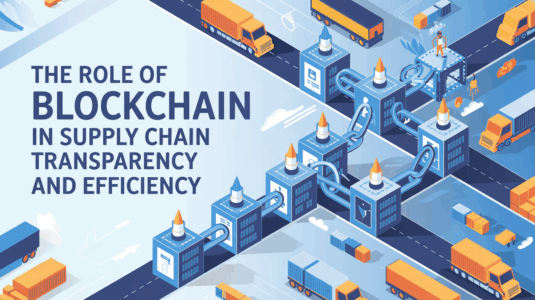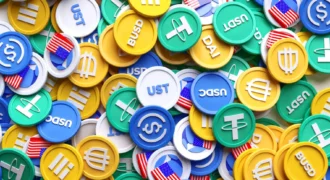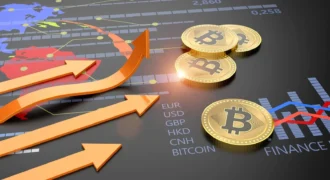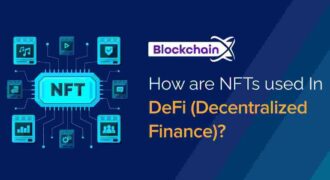In today’s global economy, supply chains are complex, multi-layered networks spanning countries, manufacturers, logistics providers, and retailers. While this interconnectedness enables efficiency and scale, it also creates challenges in transparency, traceability, and trust.
From counterfeit products to environmental concerns and regulatory compliance, supply chain issues have significant economic and reputational impacts. This is where blockchain technology enters the stage — offering a trustless, immutable, and transparent ledger that can revolutionize how goods move from origin to consumer.
Let’s explore how blockchain is reshaping supply chain management, making it more secure, accountable, and efficient.
Understanding the Supply Chain Transparency Problem
Supply chains involve multiple stakeholders, each with their own processes and systems. Common challenges include:
- Lack of Visibility: Companies often struggle to track goods across multiple tiers of suppliers.
- Counterfeit Products: Industries like pharmaceuticals, luxury goods, and electronics face huge losses due to fake or tampered items.
- Regulatory Compliance: Meeting legal and environmental standards across borders is complex.
- Data Silos: Different stakeholders maintain isolated records, making collaboration difficult.
- Fraud and Errors: Manual documentation and paper-based processes are prone to manipulation and mistakes.
Without transparency, trust becomes a major bottleneck, slowing down operations, increasing costs, and harming brand reputation.
How Blockchain Addresses Supply Chain Challenges
Blockchain offers a decentralized, immutable ledger where all participants can record, share, and verify transactions. Here’s how this technology addresses key supply chain pain points:
1. End-to-End Traceability
Blockchain enables the tracking of products from raw materials to end consumers. Each transaction, movement, or handoff is recorded as a permanent block, creating an auditable trail.
- Consumers can verify product authenticity.
- Companies can track inventory in real-time.
- Regulators can access transparent records for compliance.
For example, food suppliers can track produce from farms to grocery stores, ensuring freshness and safety.
2. Enhanced Security and Trust
Traditional supply chains rely on intermediaries and trust agreements. Blockchain removes the need to trust a single party by ensuring:
- Immutability: Once recorded, data cannot be altered or deleted.
- Consensus Mechanisms: Transactions are verified by multiple participants.
- Cryptographic Security: Data is encrypted, preventing tampering or unauthorized access.
This level of security reduces fraud, theft, and counterfeiting, fostering confidence among all stakeholders.
3. Improved Efficiency
Blockchain streamlines operations by automating verification and documentation:
- Smart contracts can trigger payments automatically when goods reach a destination.
- Reduced reliance on manual audits accelerates processes.
- Data interoperability allows suppliers, manufacturers, and distributors to collaborate in real-time.
The result is faster, more reliable supply chain operations with fewer errors and delays.
4. Regulatory Compliance
Blockchain provides transparent, immutable records that simplify reporting and audits.
- Pharmaceutical companies can demonstrate adherence to safety standards.
- Food and beverage businesses can track expiration dates and origin certifications.
- Sustainable brands can prove ethical sourcing and environmental compliance.
With blockchain, compliance is no longer a time-consuming, error-prone process — it becomes built into the supply chain.
Real-World Examples of Blockchain in Supply Chains
Several industries have already started leveraging blockchain to enhance transparency:
- Walmart & IBM Food Trust
Walmart uses IBM’s Food Trust blockchain to track leafy greens from farm to store, reducing contamination risks and recall times from weeks to seconds. - De Beers & Tracr
De Beers employs the Tracr blockchain platform to verify the authenticity of diamonds, ensuring ethical sourcing and combating conflict diamonds. - Maersk & TradeLens
Shipping giant Maersk uses TradeLens to digitize shipping documents and track containers in real-time, improving logistics efficiency. - Nestlé & OpenSC
Nestlé leverages blockchain to trace products like milk and coffee, giving consumers visibility into ethical sourcing and sustainability practices.
These examples illustrate how blockchain enhances trust, reduces fraud, and improves operational efficiency across sectors.
Benefits of Blockchain-Enabled Supply Chains
- Transparency: All participants can access the same data, fostering accountability.
- Security: Immutable records prevent tampering and fraud.
- Efficiency: Automated processes reduce delays and paperwork.
- Consumer Trust: Verified information about product origin and authenticity builds brand loyalty.
- Sustainability: Traceable supply chains allow companies to monitor environmental and social impact.
- Cost Reduction: Reduces auditing, compliance, and verification costs.
By combining visibility, security, and efficiency, blockchain creates supply chains that are both resilient and adaptable.
Challenges and Considerations
Despite its potential, blockchain adoption in supply chains faces obstacles:
- Integration Complexity
Existing supply chains rely on legacy systems. Integrating blockchain requires coordination among multiple stakeholders. - Scalability Issues
High transaction volumes can overwhelm some blockchain networks, necessitating layer-2 solutions or permissioned blockchains. - Data Accuracy
Blockchain ensures immutability, but garbage in, garbage out applies — inaccurate data entered at the source still propagates across the network. - Costs
Implementing blockchain solutions may require significant upfront investment in technology and training. - Regulatory Uncertainty
Blockchain solutions must navigate varying global regulations, especially in cross-border logistics and trade.
Despite these challenges, careful planning, stakeholder alignment, and technology selection can maximize benefits.
The Future of Blockchain in Supply Chains
As blockchain matures, several trends are emerging:
- AI Integration: AI can analyze blockchain supply chain data for predictive insights, demand forecasting, and risk management.
- IoT Connectivity: Sensors and RFID devices can feed real-time data to blockchain, ensuring accurate, automated tracking.
- Sustainable Supply Chains: Blockchain enables verification of carbon footprints and ethical sourcing, supporting ESG initiatives.
- Global Standardization: Adoption of universal protocols could make blockchain-enabled supply chains interoperable across borders and industries.
The combination of blockchain, AI, and IoT promises fully transparent, autonomous, and resilient supply networks.
Conclusion
Blockchain is more than a technology buzzword; it is a transformative tool for supply chain transparency. By providing immutable records, secure data sharing, and automated processes, blockchain addresses the longstanding challenges of visibility, trust, and efficiency.
From food safety and ethical sourcing to logistics optimization and regulatory compliance, blockchain is creating supply chains that are resilient, accountable, and consumer-friendly.
As adoption spreads across industries, organizations that embrace blockchain will not only improve operational efficiency but also gain a competitive advantage in trust, sustainability, and innovation.
In a global market where transparency and accountability are increasingly demanded by consumers and regulators alike, blockchain-enabled supply chains are no longer optional — they are essential.
The future is clear: supply chains powered by blockchain are secure, transparent, and smart — reshaping the way the world moves goods, money, and trust.

